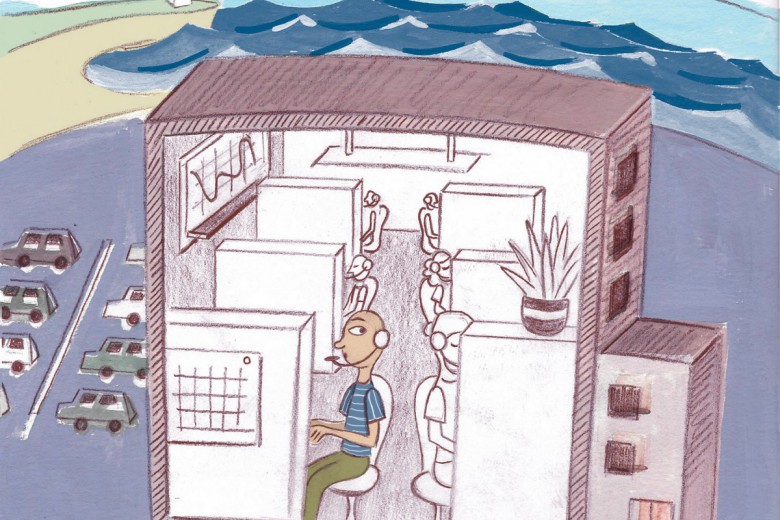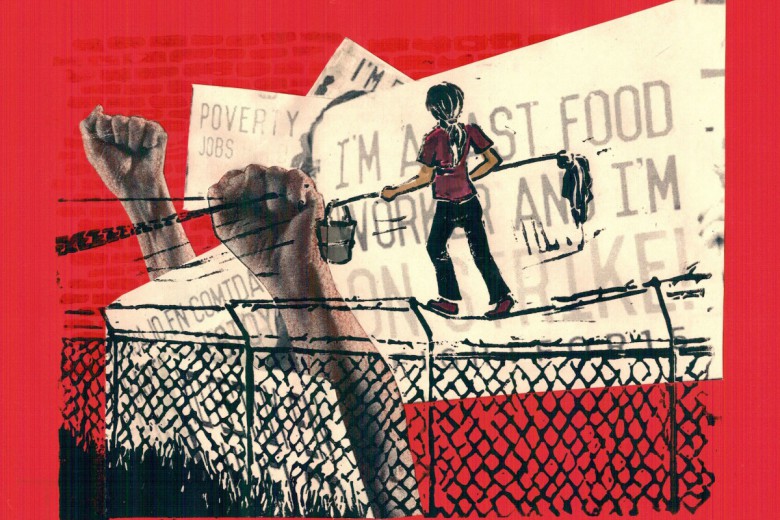A year ago, federal Finance Minister Bill Morneau said that we had to accept precarious and short-term employment as the new facts of life for young people living in Canada.
To cut costs and increase profits, employers are increasingly relying on the contracting out of their workforce, hiring freelancers, temps, or employees they misclassify as “independent contractors” to skirt their legal obligations. Millennials like andrea bennett (“The Precariat’s Parental Leave”) are expected to accept instability, lower wages, a lack of pensions, and no union protection as a matter of course.
But framing the issue in terms of youth, as Morneau has done, obscures the scope of the problem.
In August, 843,900 people in Canada were involuntarily working part-time jobs; of these, two-thirds were over the age of 25. Full-time, stable employment has been declining for decades. Of the jobs created in 2016, almost all were part-time. In some Canadian cities, as many as half of jobs are non-permanent, part-time, and without benefits. In Ontario, single parents, recent immigrants, women, and people from racialized communities are over-represented in precarious work.
Precarious employment impacts workers’ abilities to raise families, as bennett writes. Contract employees working in high-stress areas like harm-reduction (see Mick Sweetman’s “The Second Crisis”) on struggling with trauma from the overdose crisis) also have little access to health benefits, including mental health supports and counselling.
Undertrained and precarious employees are especially vulnerable to workplace injury. A month before Morneau made his comments, 23-year-old Amina Diaby, a temporary worker, died when her hijab was pulled into a machine at a Fiera Foods bakery in Toronto. Both Fiera Foods and the temp agency that hired Diaby claim they provided her with adequate health and safety training.
Meet the new boss, same as the old boss.
Labour’s traditional tactic for improving working conditions has been to organize. Yet, by and large, unions have not kept pace with structural shifts in the economy. Today, the rate of unionization is just 28.4 per cent, the lowest it has been since 1951. Unions have been slow to address racism and sexism (internally and in society), and too many are concerned with maintaining their members’ entitlements at the expense of supporting non-unionized workers. In “Our Past Is Prologue” Aina Kagis and Barb Byers offer their perspectives, as activists-turned-union leaders, on the challenges facing today’s labour movement.
In an excerpt from her powerful new book, Policing Black Lives: State Violence in Canada from Slavery to the Present, Robyn Maynard uncovers the histories of Black workers in Canada who organized in the face of segregation (“The Colour Line”). Stuart Neatby tells the story of low-wage workers in Vancouver and their breakthrough in the gaming industry (“Casino Workers Beat the House”).
The profusion of freelance, contract, and temporary work presents deeper problems for radicals. How do we build class consciousness and an anti-capitalist movement when workers are increasingly atomized and isolated, where the structure of work itself seems designed to lessen feelings of solidarity?
Today’s social movements, which are upending the public conversation around race, policing, and colonialism, provide an inspiration. Activists from these movements have been able to bring thousands into the streets, angry at injustice and united under slogans which illuminate their lived experience and perfectly crystallize their demands.
But to fundamentally transform society, we’ll need to do more than trend on Twitter, inspire an avalanche of think-pieces, or even mobilize disparate individuals to protest en masse.
In Twitter and Tear Gas: The Power and Fragility of Networked Protest, author and movement participant Zeynep Tufekci surveyed “networked” movements (defined as those movements that have “assimilated digital technologies into their fabric”) from the anti-globalization movement to the Arab Spring and Occupy Wall Street. She argues that the new ability to “organize without organizations” can allow for “great scale in rapid time frames,” but that it doesn’t acclimatize “people to the processes of collective decision making.”
Nor does it necessarily build a space for the debate and development of long-term strategy and for the nurturing of organizing expertise, accountable leadership, and structures to accommodate life-long involvement – all of which are essential if we hope to fundamentally change society.
Unions, imperfect as their current orientations are, exhibit many of these attributes. And, as Serena Nadir notes (“Unions of Our Making”), unions’ “ability to harness the power of productive wealth is key to resisting exclusion and inequality.”
The world of work has changed. We need a movement that can meet this challenge and move beyond it. We need a movement that builds democratic, sustainable structures to manifest our potential collective strength, but with the courage, spontaneity, and audacity of grassroots movements.
We need a new union, the same as – and different from – the old union.







